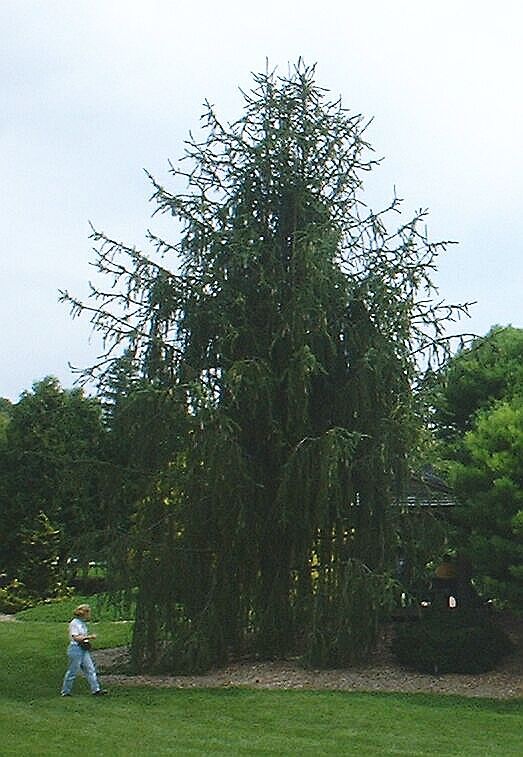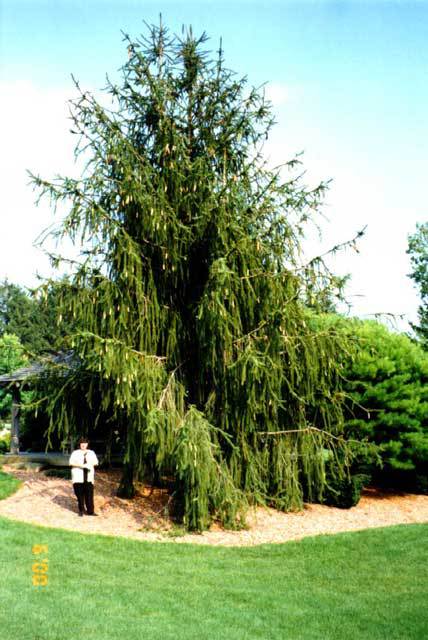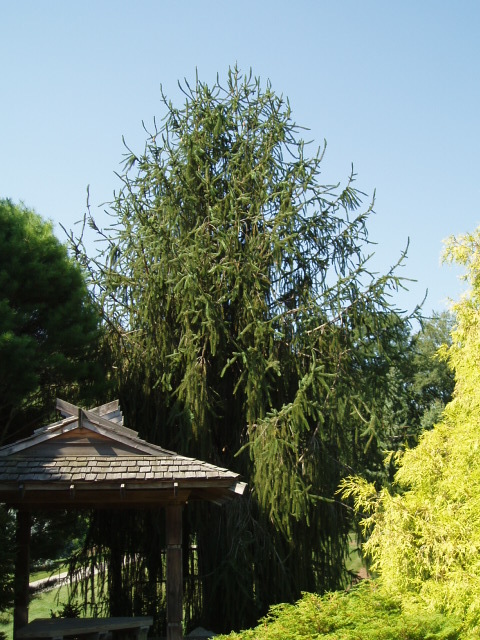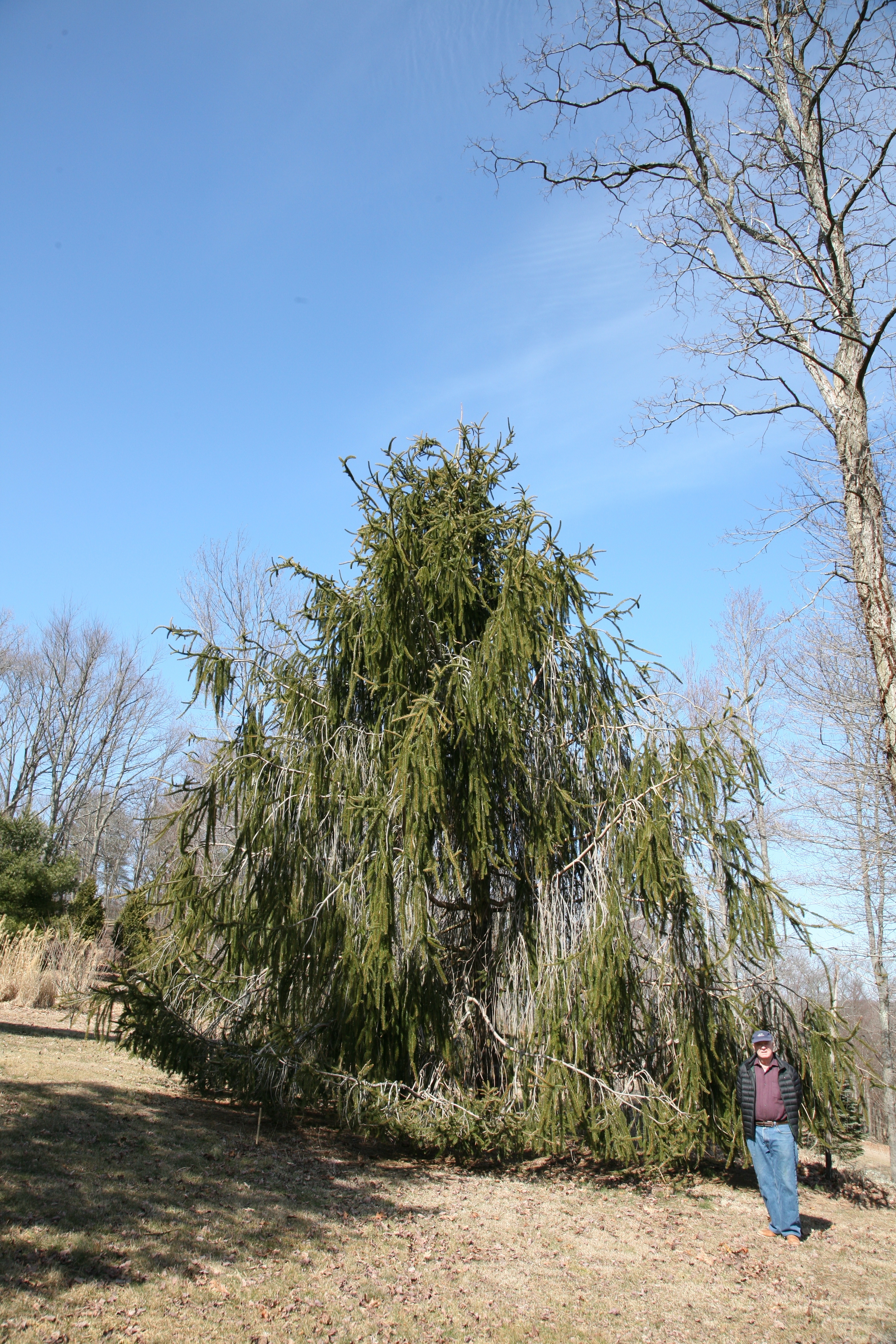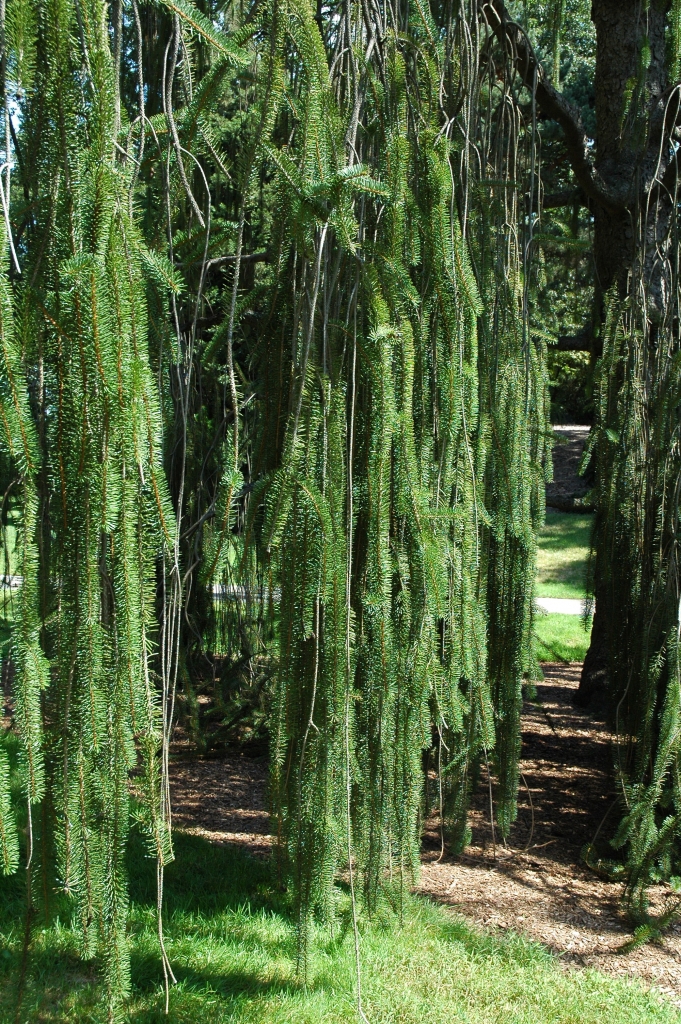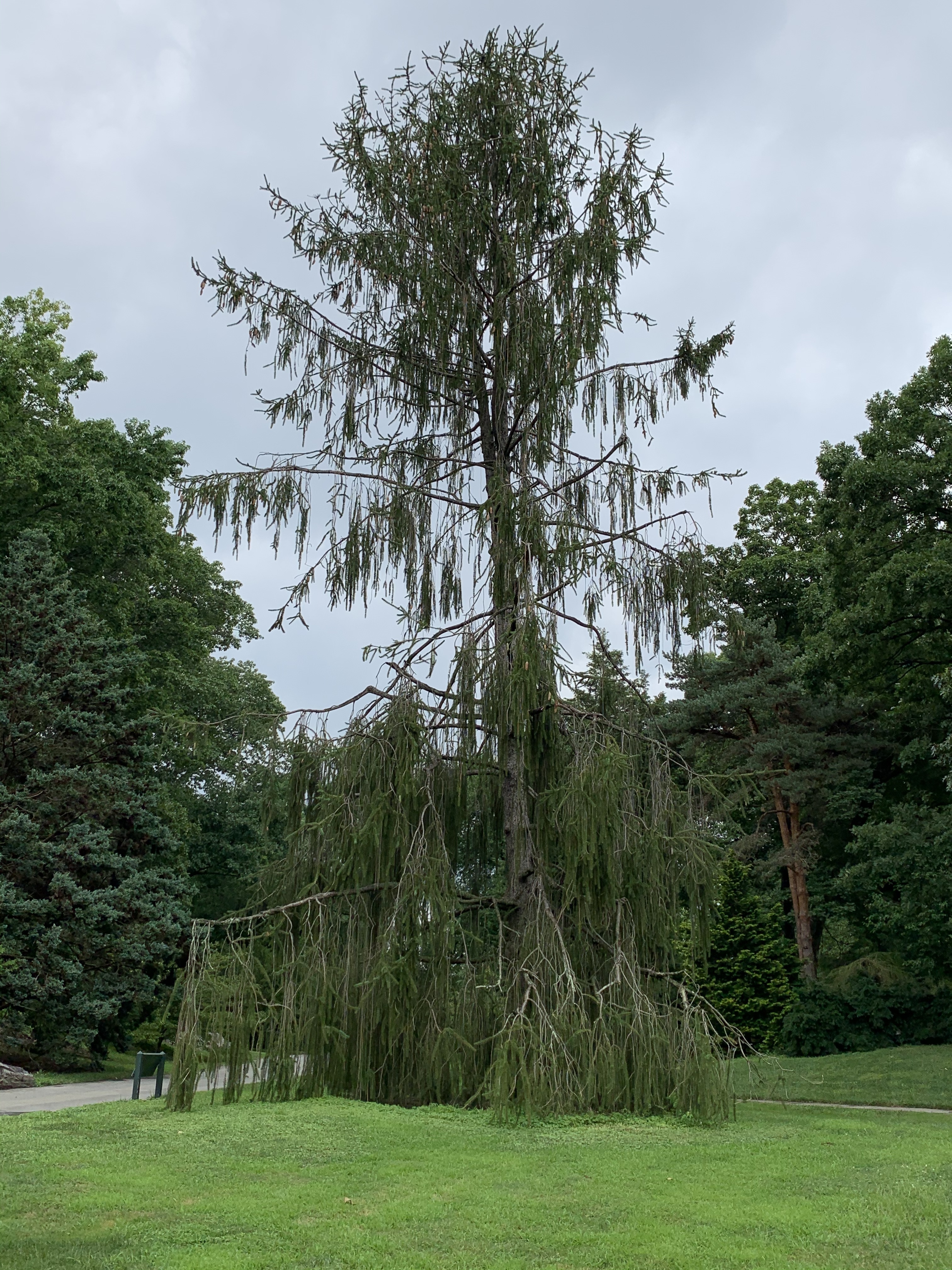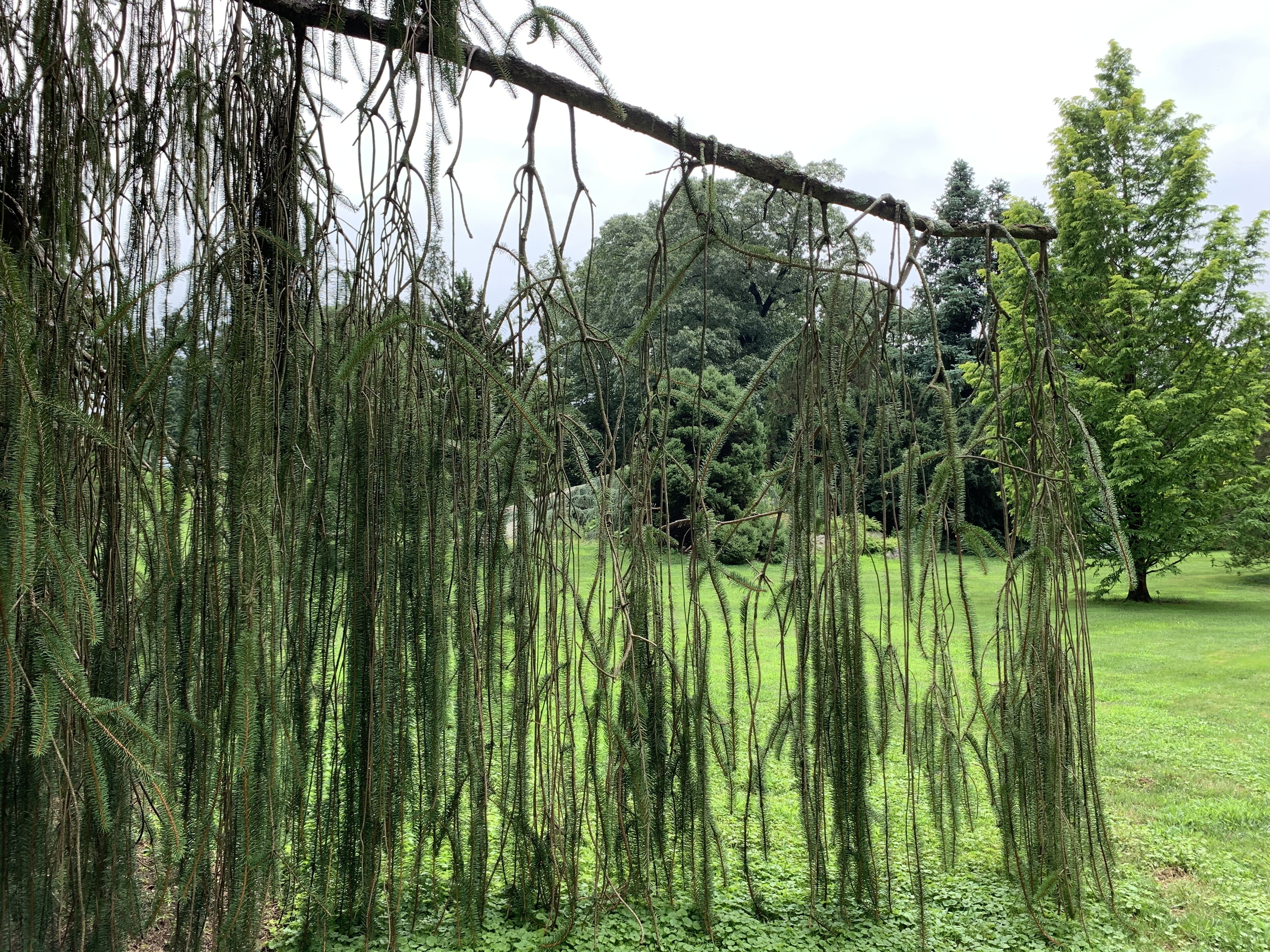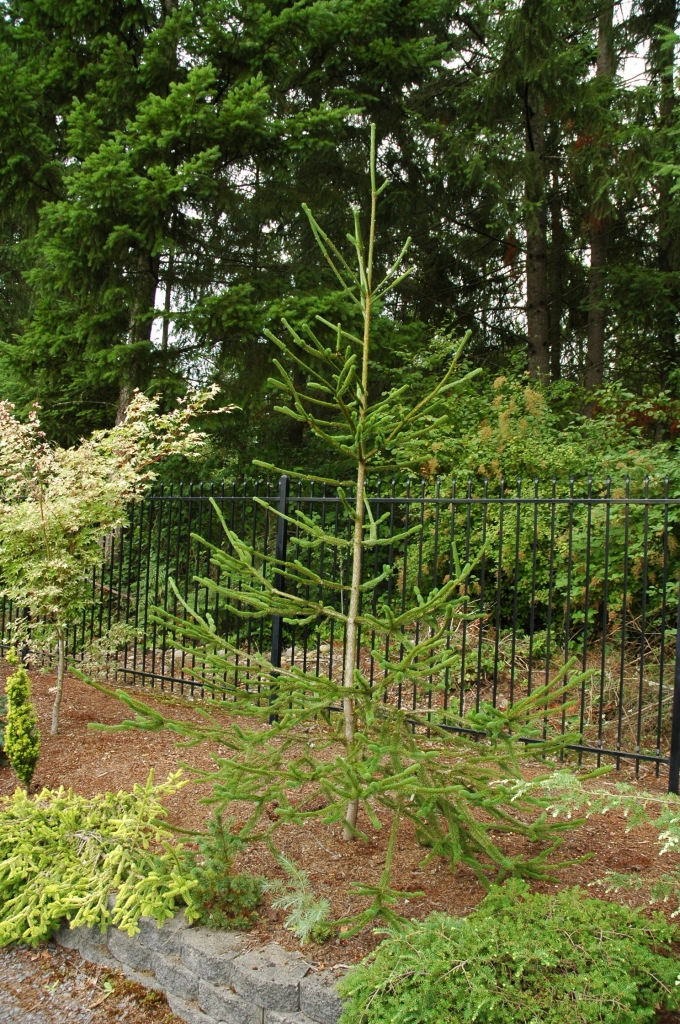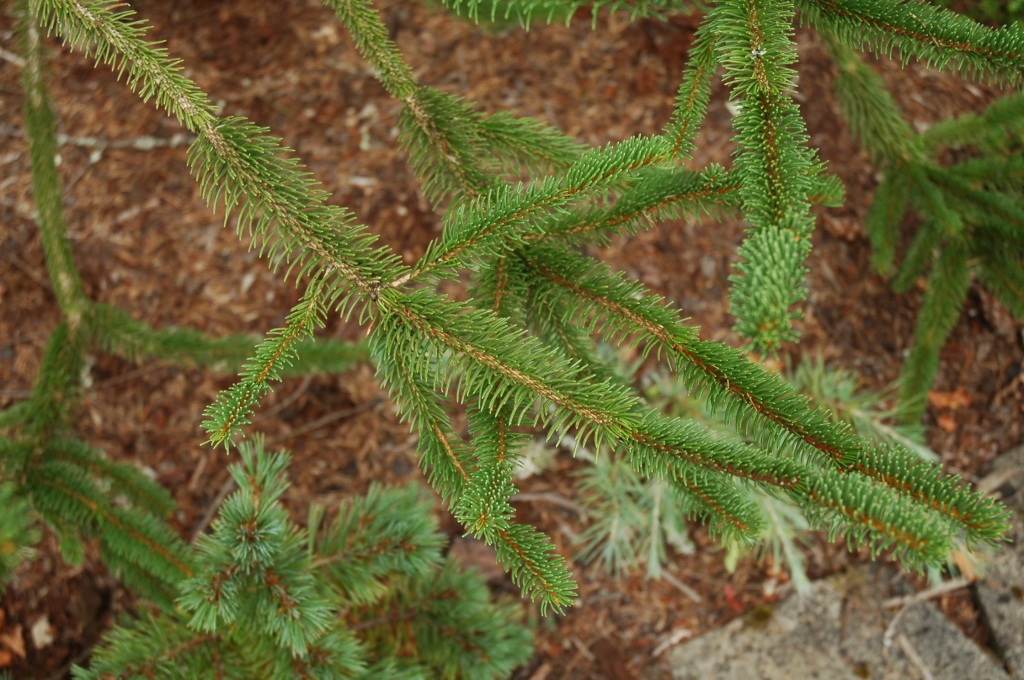Picea abies 'Virgata' is a robust, fast-growing, tree form of Norway spruce that generally grows with a dominant central leader. Branch arrangement usually solitary or growing in irregular whorls. They are long, horizontal, often intertwining, chaotic and "snake-like." The uppermost branches are directed upward and the lowermost, to include branchlets are quite pendulous; usually without side buds. It is quite similar in structure to P. abies 'Cranstonii,' another large growing snake spruce. The major distinction is the nature of the lateral branching. If they are generally flat and horizontal, the plant in question is 'Virgata.' If the branching is more upward-facing, it's a 'Cranstonii.' In the U.S. nursery trade, the cultivars are often confused and interchanged by growers.
After 10 years of growth, a mature specimen will measure 25 feet (7 m) or more in height and two-thirds as wide, an annual growth rate in excess of 3 feet (1 m).
This cultivar originated in France and first described in botanical literature in 1853 by Henri Antoine Jacques in Monographie de la famille des conifers.
